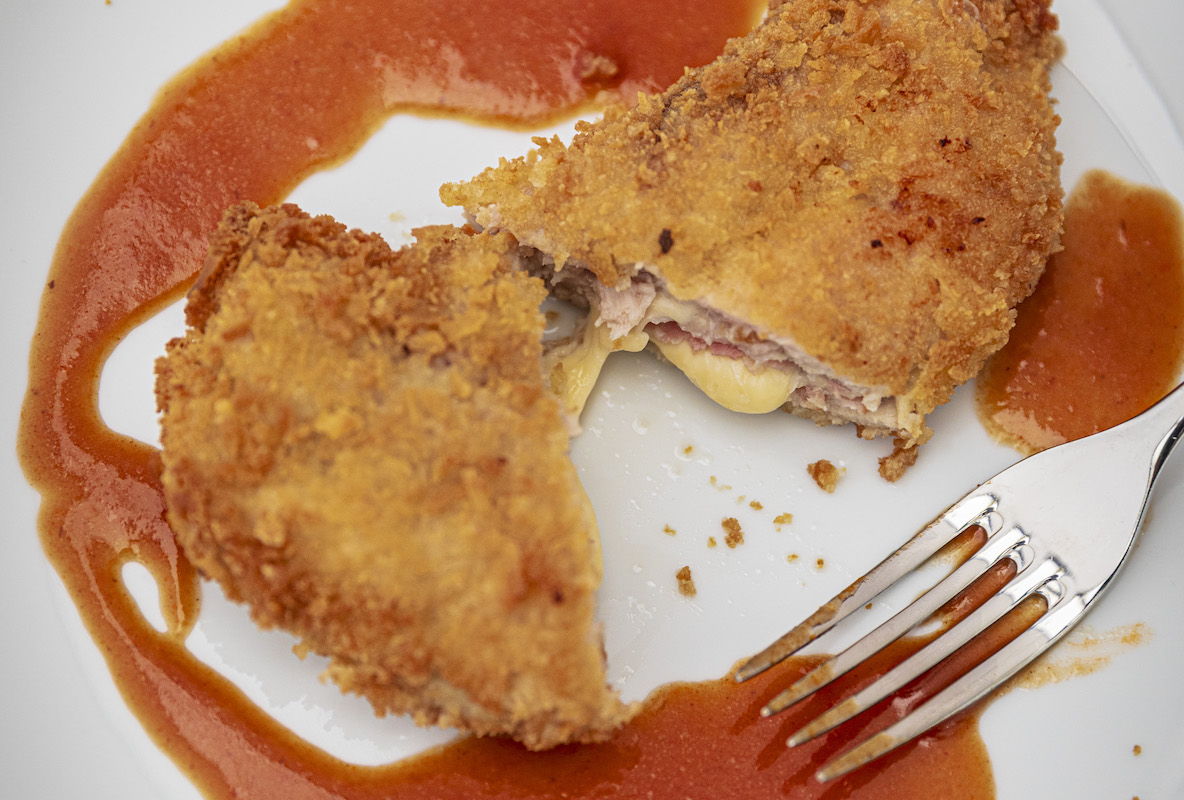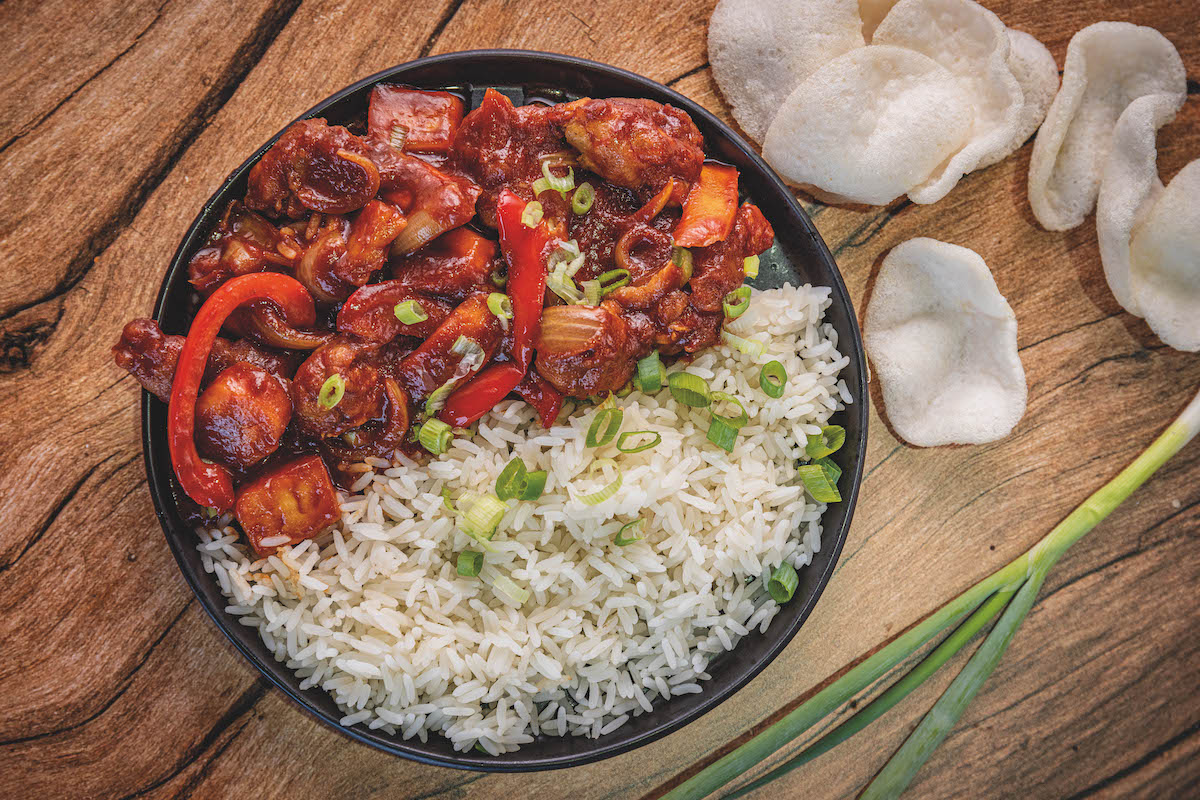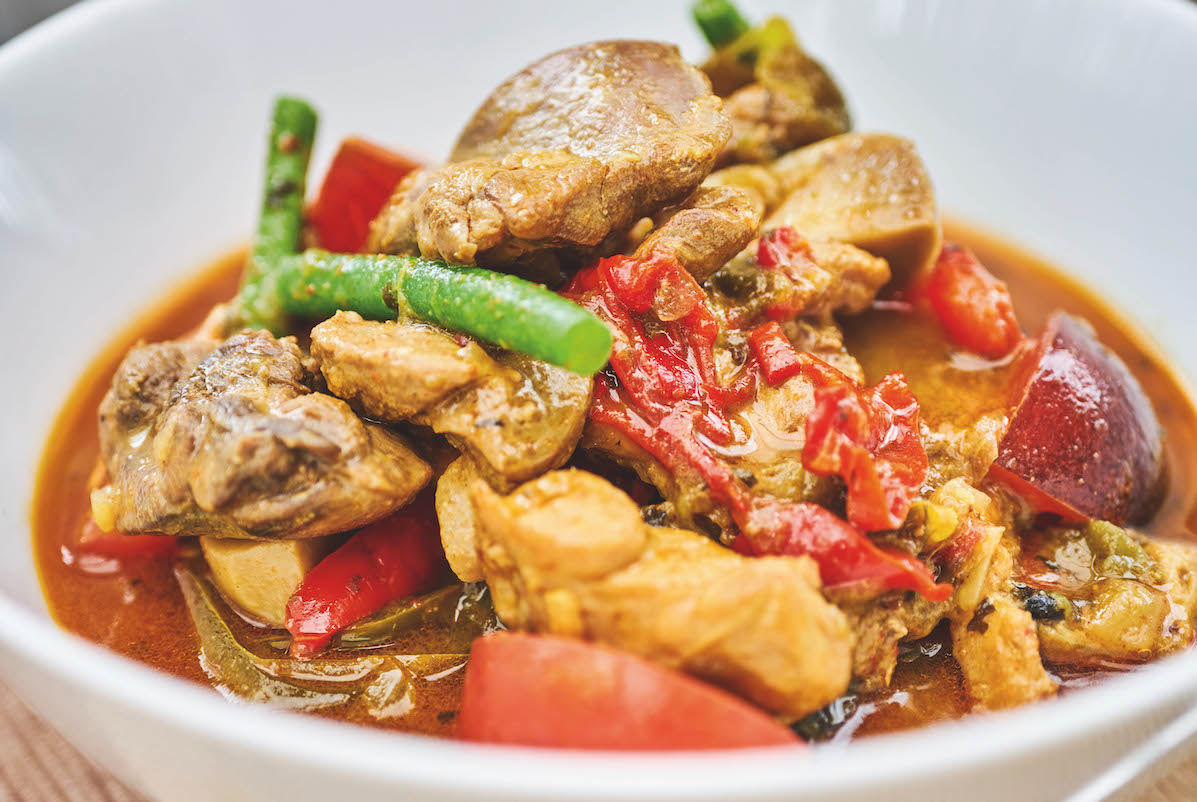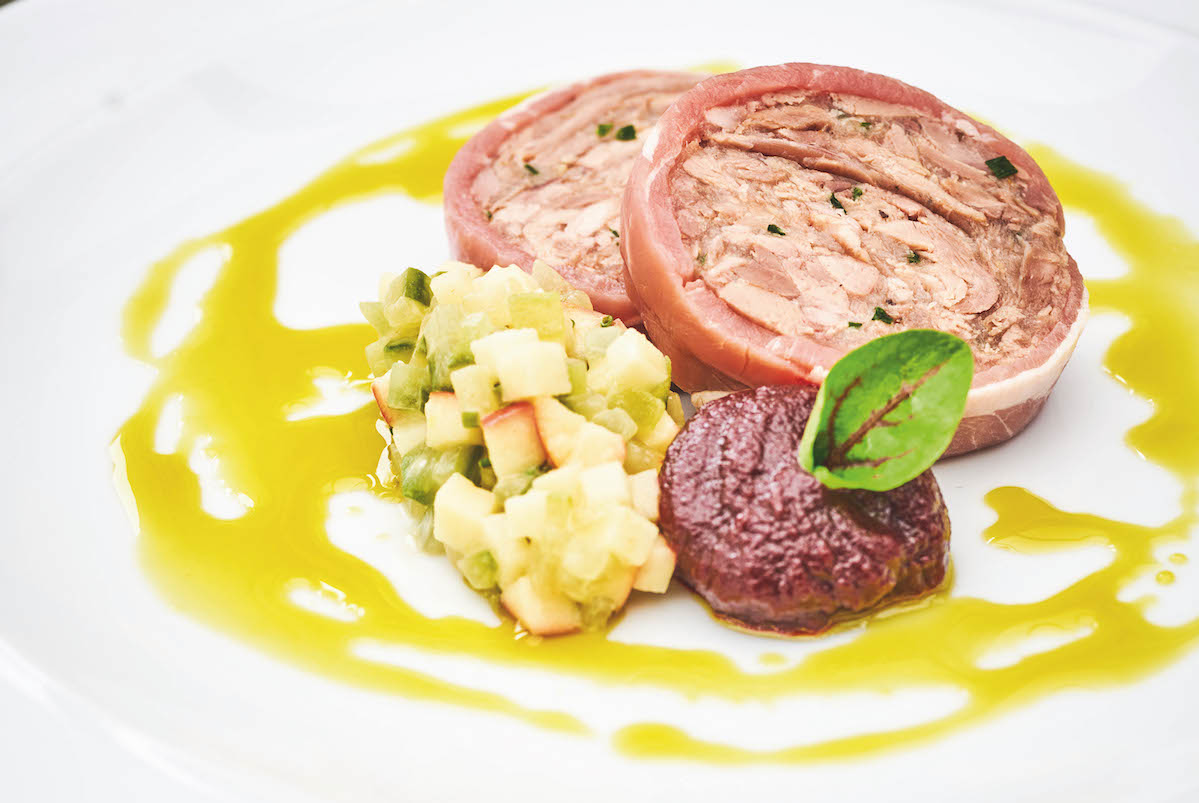Pheasant Cordon Bleu recipe: a classic with a twist
A classic meat, cheese and breadcrumb dish from José Souto. Serves four.

Pheasant Cordon Bleu
Pheasant Cordon Bleu is a classic that works well with pheasant, whether you take it with falcon or gun.
Pheasant Cordon Bleu recipe
Ingredients
- Olive oil
- ½ onion, finely chopped
- 1 clove garlic, finely chopped
- 50ml white wine
- 100ml chicken stock
- 250ml passata
- 4 skinless, boneless pheasant breasts
- 80g Gruyère cheese 4
- slices of serrano or parma ham
- 1 egg
- 25g plain flour
- 100g Panko breadcrumbs
- 55ml malt vinegar
- 2 tsp sugar
- 25g butter
Method
- Add a little oil to a saucepan, sweat off the onion and garlic until transparent. Add the wine and reduce by two-thirds. Add the chicken stock and reduce by half again, then add the passata and simmer for 20 minutes.
- Use a sharp knife to butterfly the breasts — cut along the thickest part of the pheasant. Then divide the cheese into four 20g pieces (small enough to be hidden within the breast). Wrap the cheese in a slice of ham and place on to each of the butterflied breasts, then fold over.
- Beat the egg and keep aside. Place the flour and breadcrumbs on to two separate shallow plates. Coat the pheasant breasts in flour so they are well dusted. Shake off any excess, then place into the beaten egg, making sure the meat is well coated. Finally, drop the meat into the breadcrumbs and ensure they are well covered. Place the breasts on to a board and use a palette knife to shape them around the edges to ensure they are evenly shaped.
- Place the vinegar and sugar into a small saucepan and bring to the boil. Meanwhile, pass the tomato-and-wine sauce through a sieve. Once the vinegar mix has turned to a caramel, stir in the sauce and leave to one side.
- Add 5mm of oil to a small frying pan and heat up. Place the pheasant breasts into the oil and cook on a medium sizzling heat for 4 minutes, then add the butter and allow to cook for a further 2 minutes. Turn the breasts over and cook for another 4 minutes. Once cooked, they should be golden-brown and the cheese should be soft in the middle. Serve the pheasant breasts with the tomato sauce.
(Read our recipe for pheasant bolognese sauce.. )
Thoughts on pheasants
Pheasants are a tricky and cunning quarry for most falconers — especially the older cock birds. They seem to have that ability to melt into the countryside and magically disappear. More than once, before I had dogs, I marked one and made my way to it expecting an eruption from the cover, only to find nothing. Their burst of flight can also be vastly different depending on where they live.
Here on the Fens, when flushed, pheasants fly away in a low-level horizontal flight, whereas in more wooded or scrub areas they tend to fly up vertically and then away. If anything, these woodland birds are easier for my goshawk to catch as she will climb up into the air to snatch her prize. This is truly amazing to watch and last year I clocked her doing 40mph from a standing (perching?) start — going up vertically as she hit the pheasant. Later that year, not far from home, she clocked just short of 60mph in a straight-line flight. For falcons, it’s all about the power with which they hit the pheasant. A falcon’s stoop can measure well in excess of 120mph, so pheasant are not outrunning them, but they are hardy. In some instances, I have seen big cock birds simply shrug off the hit and continue their flight as if nothing had happened. This challenge is what makes the prize of a pheasant so great to the falconer.








